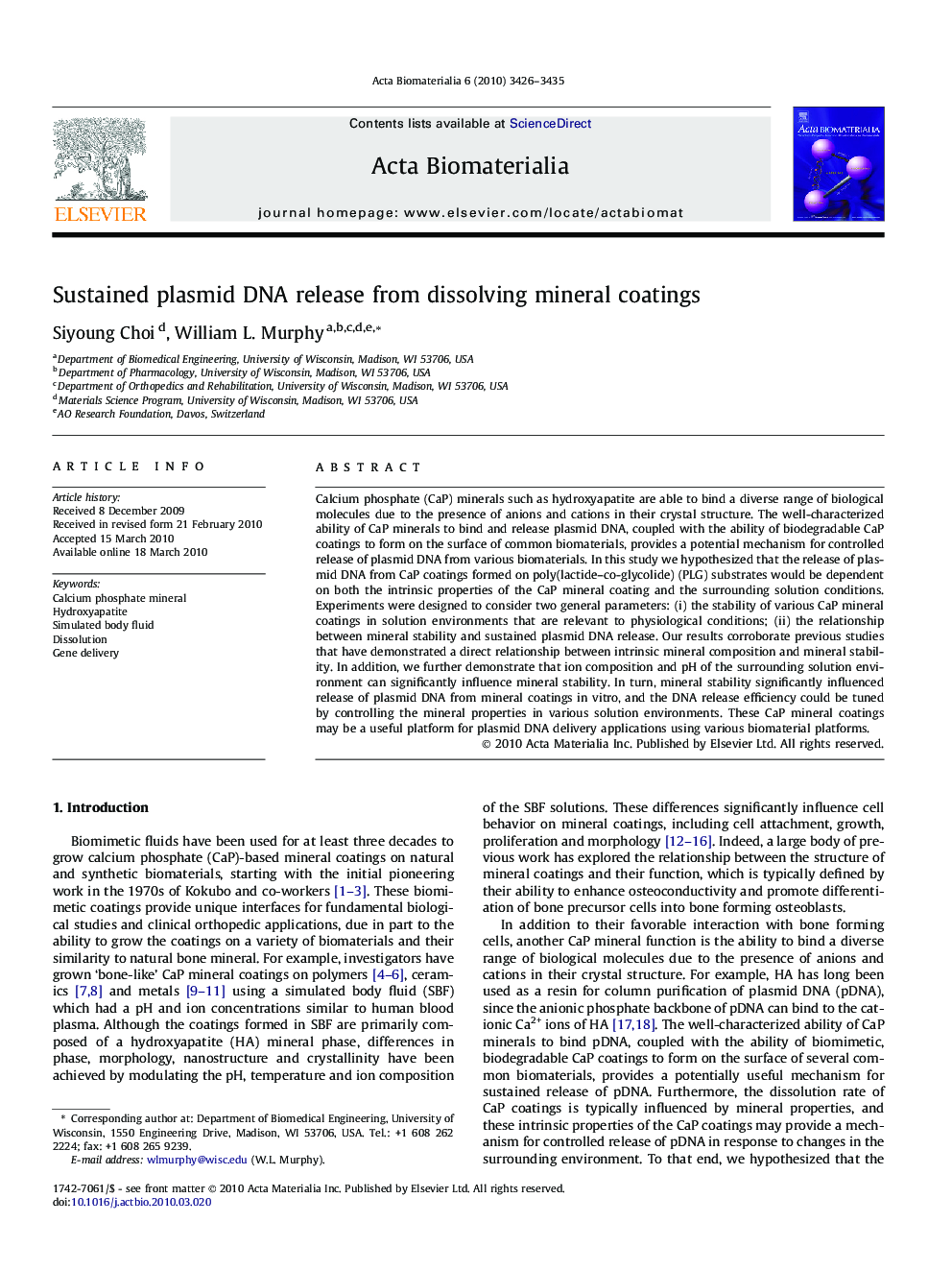| Article ID | Journal | Published Year | Pages | File Type |
|---|---|---|---|---|
| 2136 | Acta Biomaterialia | 2010 | 10 Pages |
Calcium phosphate (CaP) minerals such as hydroxyapatite are able to bind a diverse range of biological molecules due to the presence of anions and cations in their crystal structure. The well-characterized ability of CaP minerals to bind and release plasmid DNA, coupled with the ability of biodegradable CaP coatings to form on the surface of common biomaterials, provides a potential mechanism for controlled release of plasmid DNA from various biomaterials. In this study we hypothesized that the release of plasmid DNA from CaP coatings formed on poly(lactide–co-glycolide) (PLG) substrates would be dependent on both the intrinsic properties of the CaP mineral coating and the surrounding solution conditions. Experiments were designed to consider two general parameters: (i) the stability of various CaP mineral coatings in solution environments that are relevant to physiological conditions; (ii) the relationship between mineral stability and sustained plasmid DNA release. Our results corroborate previous studies that have demonstrated a direct relationship between intrinsic mineral composition and mineral stability. In addition, we further demonstrate that ion composition and pH of the surrounding solution environment can significantly influence mineral stability. In turn, mineral stability significantly influenced release of plasmid DNA from mineral coatings in vitro, and the DNA release efficiency could be tuned by controlling the mineral properties in various solution environments. These CaP mineral coatings may be a useful platform for plasmid DNA delivery applications using various biomaterial platforms.
